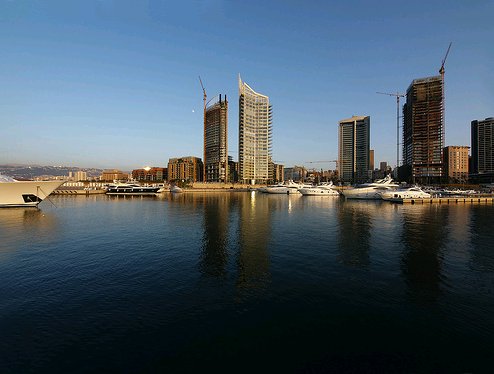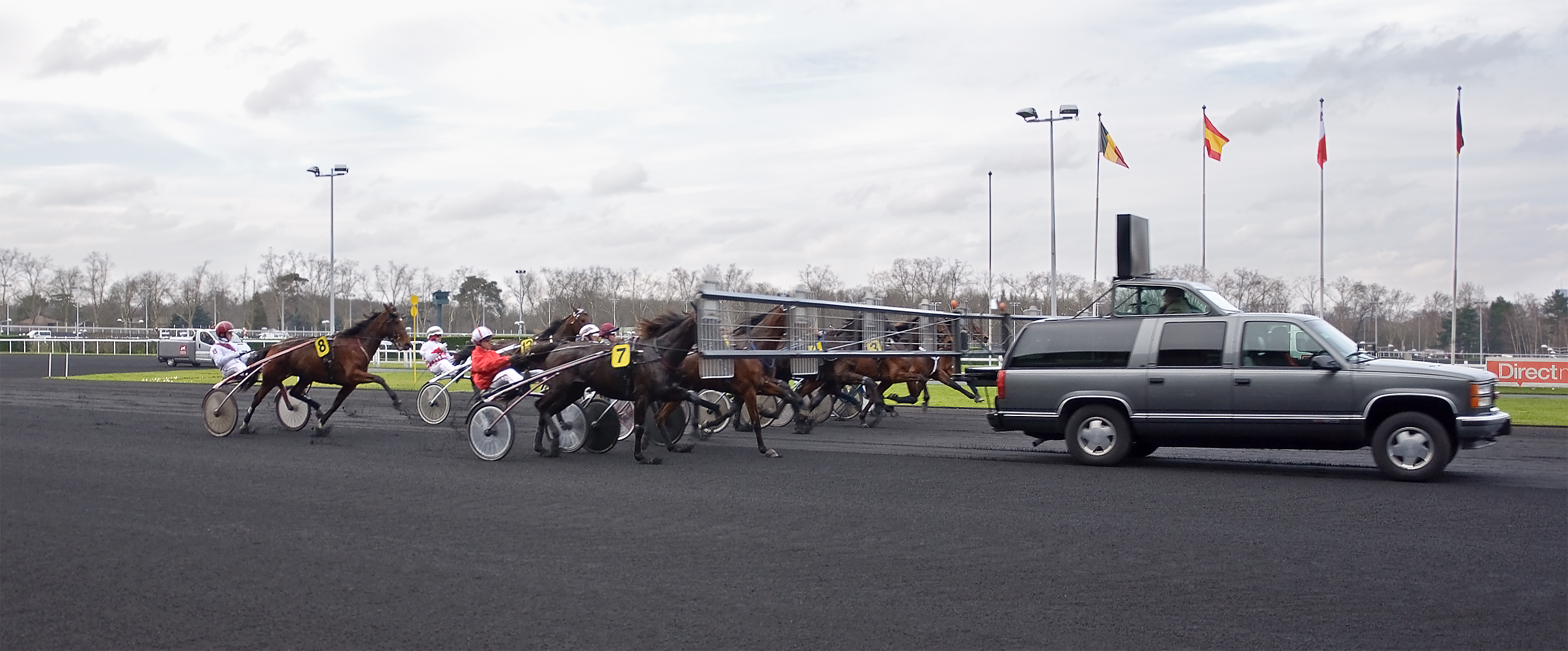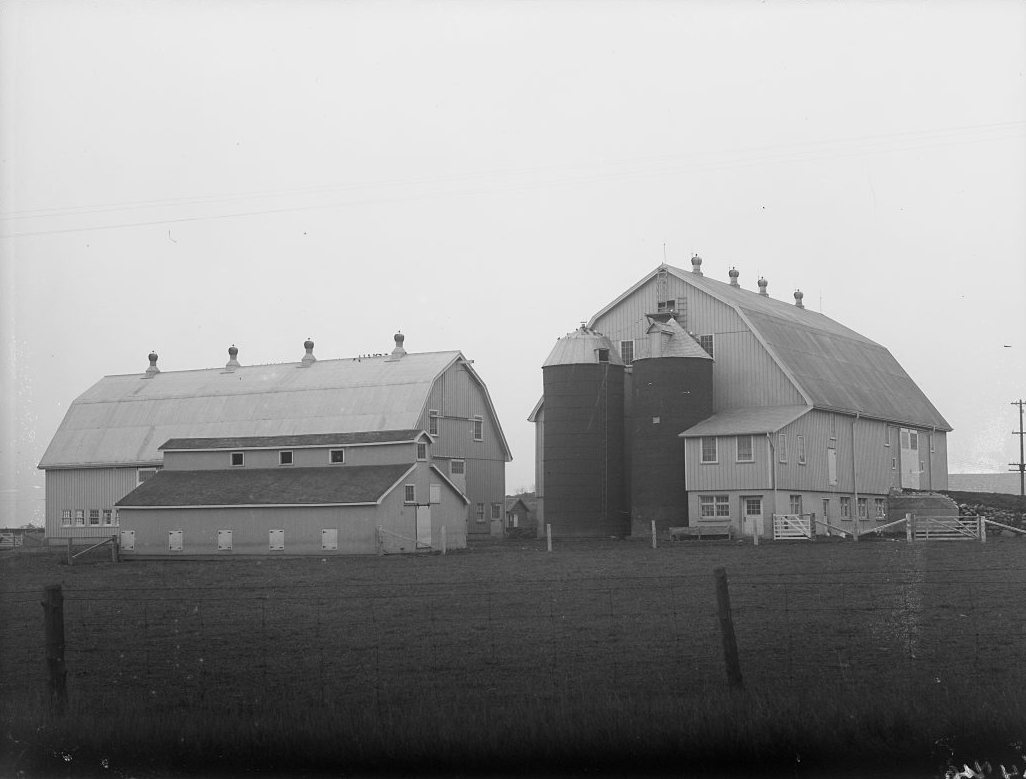|
Thorncliffe Park
Thorncliffe Park is a neighbourhood in Toronto, Ontario, Canada, in the former Borough of East York. The City of Toronto recognizes Thorncliffe Park's boundaries as the Don River on the south side; Leaside Bridge, Millwood Road, and Laird Drive on the west side; the West Don River on the east side; and Eglinton Avenue East on the north side. History Thorncliffe Park is named for Thorn Cliff House, the first Toronto home of the industrious 19th century Taylor family. The house was located on 82 acres of farmland that British settler John Taylor purchased in 1831 at the Forks of the Don Valley, in present-day E.T. Seton Park. Thorn Cliff remained the family home until 1888 and was demolished in the 1940s. Taylor purchased the land from Samuel Sinclair. It was originally farmed by Parshall Terry, with settlement records for Thorncliffe Park going back to 1800, just seven years after the founding of the Town of York. With growing business interests in horse and cattle bre ... [...More Info...] [...Related Items...] OR: [Wikipedia] [Google] [Baidu] |
Toronto
Toronto ( , locally pronounced or ) is the List of the largest municipalities in Canada by population, most populous city in Canada. It is the capital city of the Provinces and territories of Canada, Canadian province of Ontario. With a population of 2,794,356 in 2021, it is the List of North American cities by population, fourth-most populous city in North America. The city is the anchor of the Golden Horseshoe, an urban agglomeration of 9,765,188 people (as of 2021) surrounding the western end of Lake Ontario, while the Greater Toronto Area proper had a 2021 population of 6,712,341. As of 2024, the census metropolitan area had an estimated population of 7,106,379. Toronto is an international centre of business, finance, arts, sports, and culture, and is recognized as one of the most multiculturalism, multicultural and cosmopolitanism, cosmopolitan cities in the world. Indigenous peoples in Canada, Indigenous peoples have travelled through and inhabited the Toronto area, ... [...More Info...] [...Related Items...] OR: [Wikipedia] [Google] [Baidu] |
John Taylor (paper Manufacturer)
John Taylor (1809–1871) was a British-born Toronto-area businessman and a pioneer in the pulp and paper industry. Early life The Taylor family immigrated to Upper Canada (via Cherry Valley, New York) in 1821 from Uttoxeter, Staffordshire. By 1834, John Taylor and his brothers, Thomas and George, moved from the village of Vaughan to the Township of York, north-east of the newly created city of Toronto. The brothers set their sights on the banks of the Don River, an area with an already burgeoning pulp and paper industry. Paper production The 1850s brought a wave of expansion to the paper industry in Toronto. By this time, Toronto's population had grown to over thirty thousand and this growing community was also becoming more literate, increasing the demand for books and newspapers. The Taylor family business was also expanding: the brothers had already built their first paper mill on the West Don in 1846; in 1851 they purchased a water-powered saw mill, and also purchased t ... [...More Info...] [...Related Items...] OR: [Wikipedia] [Google] [Baidu] |
Canadian Red Cross
The Canadian Red Cross Society ()The Canadian Red Cross Society ''Charities Directorate – Government of Canada''. is a humanitarian , and one of 192 national Red Cross and Red Crescent societies. The organization receives funding from both private donations and from Canadian go ... [...More Info...] [...Related Items...] OR: [Wikipedia] [Google] [Baidu] |
Ontario Science Centre
The Ontario Science Centre (OSC; originally the Centennial Museum of Science and Technology) is a science museum and organization based in Toronto, Ontario, Canada. Its original location opened to the public in 1969 and was located near the Don Valley Parkway about northeast of downtown on Don Mills Road in the former city of North York. It was built down the side of a wooded ravine formed by one branch of the Don River located in Flemingdon Park. In 2023, Premier of Ontario Doug Ford announced the Ontario government's plan to replace the Ontario Science Centre with a smaller institution on the Toronto waterfront. The following year, the government announced that the Don Mills location would close permanently after an engineering report identified a high risk of roof collapse. Both decisions have been met with considerable public opposition. History Construction and opening Planning for the Science Centre started in 1961 during Toronto's expansion in the late 1950s and ... [...More Info...] [...Related Items...] OR: [Wikipedia] [Google] [Baidu] |
Real Estate Development
Real estate development, or property development, is a business process, encompassing activities that range from the renovation and re-lease of existing buildings to the purchase of raw Real Estate, land and the sale of developed land or parcels to others. Real estate developers are the people and companies who coordinate all of these activities, converting ideas from paper to real property. Real estate development is different from construction or Home construction, housebuilding, although many developers also manage the construction process or engage in housebuilding. Developers buy land, finance real estate deals, build or have builders build projects, develop projects in joint ventures, and create, imagine, control, and orchestrate the process of development from beginning to end.New York Times, March 16, 1963, "Personality Boom is Loud for Louis Lesser" Developers usually take the greatest risk in the creation or renovation of real estate and receive the greatest rewards. ... [...More Info...] [...Related Items...] OR: [Wikipedia] [Google] [Baidu] |
Harness Racing
Harness racing is a form of horse racing in which the horses race at a specific gait (a trot or a pace). They usually pull a two-wheeled cart called a sulky, spider, or chariot occupied by a driver. In Europe, and less frequently in Australia and New Zealand, races with jockeys riding directly on saddled trotters ( in French) are also conducted. Breeds In North America, harness races are restricted to Standardbred horses, although European racehorses may also be French Trotters or Russian Trotters, or have mixed ancestry with lineages from multiple breeds. Orlov Trotters race separately in Russia. The light cold-blooded Coldblood trotters and Finnhorses race separately in Finland, Norway and Sweden. Standardbreds are so named because in the early years of the Standardbred stud book, only horses who could trot or pace a mile in a ''standard'' time (or whose progeny could do so) of no more than 2 minutes, 30 seconds were admitted to the book. The horses have proportiona ... [...More Info...] [...Related Items...] OR: [Wikipedia] [Google] [Baidu] |
Thoroughbred Horse Race
Thoroughbred racing is a sport and industry involving the racing of Thoroughbred horses. It is governed by different national bodies. There are two forms of the sport – flat racing and jump racing, the latter known as National Hunt racing in the UK and steeplechasing in the US. Jump racing can be further divided into hurdling and steeplechasing. According to ''The Guardian'', the racing of Thoroughbreds has been steadily declining in popularity worldwide. Between 700 and 800 racehorses die in racing each year. Ownership and training of racehorses Traditionally, racehorses have been owned by wealthy individuals. It has become increasingly common in the last few decades for horses to be owned by syndicates or partnerships. Notable examples include the 2005 Epsom Derby winner Motivator, owned by the Royal Ascot Racing Club, 2003 Kentucky Derby winner Funny Cide, owned by a group of 10 partners organized as Sackatoga Stable, and 2008 Kentucky Derby winner Big Brown, owned ... [...More Info...] [...Related Items...] OR: [Wikipedia] [Google] [Baidu] |
Thorncliffe Park Raceway
Thorncliffe Park Raceway was a Toronto-area racetrack that operated from 1917 until 1952. It was located east of Millwood Road, south of Eglinton Avenue East and the CPR's railroad tracks. It was the first home of the Prince of Wales Stakes. The name is retained today by the Thorncliffe Park neighbourhood. History The site of Thorncliffe Park Raceway was originally owned by John Taylor and members of the Taylor family, who established mills, a brewery and a brickyard along the Don River (Ontario). Robert T. Davies, the wealthy founder of the Dominion Brewing Company and related to the Taylor family by marriage, acquired the property in the late 19th century and renamed it Thorncliffe Farm. The name of the farm, and later the racetrack, was inspired by Thorn Cliff, a house built on the west side of the Don River by a member of the third generation of the Taylor family. An avid participant in horse racing, under the banner of Thorncliffe Stable, Davies raced both thoroughb ... [...More Info...] [...Related Items...] OR: [Wikipedia] [Google] [Baidu] |
Thornhill, Ontario
Thornhill is a suburban district in the Regional Municipality of York in Ontario, Canada. The western portion of Thornhill is within the City of Vaughan and its eastern portion is within the City of Markham, Ontario, Markham, with Yonge Street forming the boundary between Vaughan and Markham. Thornhill is situated along the northern border of Toronto, centred on Yonge, and is also immediately south of the City of Richmond Hill, Ontario, Richmond Hill. Once a police village, Thornhill is still a postal designation. As of Canada 2016 Census, 2016, its total population, including both its Vaughan and Markham sections, was 112,719. History Early history Thornhill was founded in 1794. For a fuller account of Thornhill's early history, see Isabel Champion, ed., Markham: 1793–1900' (Markham, ON: Markham Historical Society, 1979), 297–301; 70f., 97f., 140f., 170, 335. The original boundaries were the northern bounds of the Ladies Golf Club on the east side of Yonge and further nor ... [...More Info...] [...Related Items...] OR: [Wikipedia] [Google] [Baidu] |
Thorncliffe Stable
Thorncliffe Stable is a defunct Thoroughbred and Standardbred horse racing and breeding operation established in 1888 in Toronto, Ontario by businessman Robert T. Davies. The stable was based at Davies' Thorn Cliff Farm in the Don River Valley in what is now known as Thorncliffe Park. Yellow and black were the stable's racing colours. When Robert Davies died in 1916 his sons, Robert, George, Wilfred and Melville took over the racing operation but sold the Thorncliffe farm property to a group of investors from Baltimore, Maryland who built Thorncliffe Park Raceway. During its existence, Thorncliffe Stable won numerous important races in Ontario including the: * Coronation Futurity (1921, 1922, 1928, 1932) *Queen's Plate (1922, 1929) * Breeders' Stakes (1923, 1930, 1933) * Durham Cup Stakes (1925) * Clarendon Stakes (1928) The stable's final success came in 1935 when the Thorncliffe-bred filly A filly is a female horse that is too young to be called a mare. There are two specifi ... [...More Info...] [...Related Items...] OR: [Wikipedia] [Google] [Baidu] |
Robert T
The name Robert is an ancient Germanic given name, from Proto-Germanic "fame" and "bright" (''Hrōþiberhtaz''). Compare Old Dutch ''Robrecht'' and Old High German ''Hrodebert'' (a compound of '' Hruod'' () "fame, glory, honour, praise, renown, godlike" and ''berht'' "bright, light, shining"). It is the second most frequently used given name of ancient Germanic origin.Reaney & Wilson, 1997. ''Dictionary of English Surnames''. Oxford University Press. It is also in use as a surname. Another commonly used form of the name is Rupert. After becoming widely used in Continental Europe, the name entered England in its Old French form ''Robert'', where an Old English cognate form (''Hrēodbēorht'', ''Hrodberht'', ''Hrēodbēorð'', ''Hrœdbœrð'', ''Hrœdberð'', ''Hrōðberχtŕ'') had existed before the Norman Conquest. The feminine version is Roberta. The Italian, Portuguese, and Spanish form is Roberto. Robert is also a common name in many Germanic languages, including En ... [...More Info...] [...Related Items...] OR: [Wikipedia] [Google] [Baidu] |
Flemingdon Park
Flemingdon Park (locally Flemo) is a neighbourhood in Toronto, Ontario, Canada, located in the city's North York district. It is part of the Don Valley East federal and provincial electoral districts, and Ward 26: Don Valley East (South) municipally. In 2011, its population was 22,205. The average income was $66,784. It is bordered on the north by Eglinton Avenue East, on the west by the Don River (west branch), and on the east and south by the Don River (east branch). The two branches of the river join at the neighbourhood's southwest corner. The south border is a parkland access road that used to be known as Old Lawrence Avenue. Flemingdon Park is separated from neighbouring communities by river valleys on three sides, and a light industrial area, now mostly used as corporate offices, next to several railway lines on the north side. The community is named after its original owner, Robert John Fleming, the Mayor of Toronto in 1892–1893 and 1896–1897, and the nearby Don ... [...More Info...] [...Related Items...] OR: [Wikipedia] [Google] [Baidu] |








